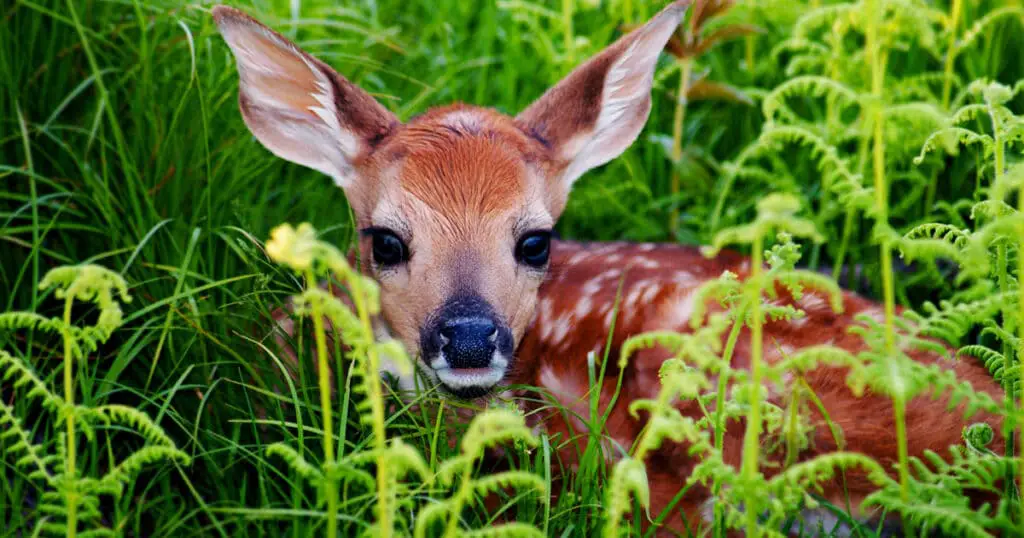An adult deer may be called by a different name depending on its gender, build, and the size of its species. For example, a small or medium-build male deer is called a buck, while the male deer of larger deer species may be called either a stag or a bull. The same goes for a female deer. Females of most species of deer are named does, but some may be a hind or a cow. It is but natural to wonder if the offspring of adult deer also have different names. What is a baby deer called, and do the names of baby deer vary by species or in different parts of the world?
Today we’ll explore this common question, tell you the most common baby deer name, and provide the answers to other common questions you may ask about young deer.
So, What is a Baby Deer Called?
Table of Contents
ToggleDifferent terms are used for newborn or young deer. “Fawn” is the most common baby deer name, but sometimes baby deer are called either a “calf” or a “kid.” The species of deer in question, and where you are in the world can play a role in determining what the most accurate name for a young deer is, and what you should call it.
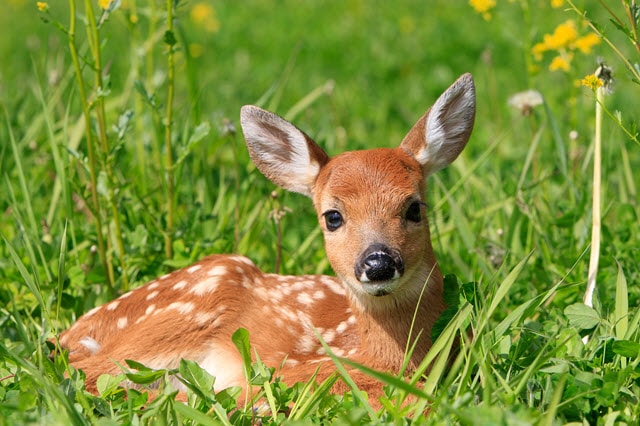
Let’s look a little closer at these common terms for young deer.
Fawn
The young of small and medium-sized deer species, including those of the white-tailed deer, roe deer and muntjac deer, are called fawns.
The word “fawn” is adapted from the Old French noun faon, which means “a young animal.” It is also derived from the Middle English faunen, a verb that means “to rejoice” or “to be glad.”
Calf
Larger species of deer, such as the elk, moose, reindeer, and red deer, call their young a calf.
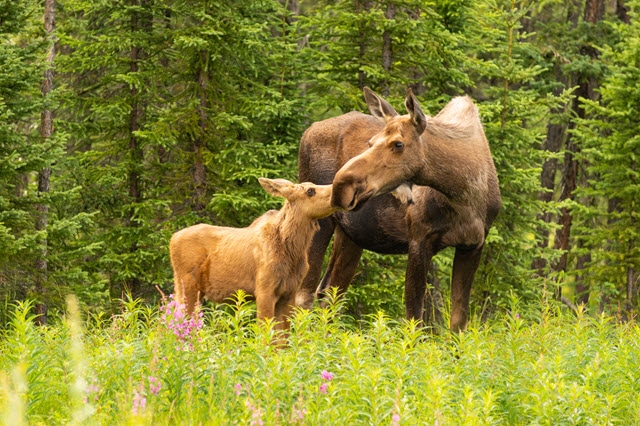
However, the term calf is not exclusive to the deer species. It is also used when referring to the young of other animals such as the elephant, giraffe, dolphin, and cow.
Kid
Some call baby deer kids because newly born deer are almost the same size as a human kid, and because baby goats are often referred to as kids and that may be the language someone is used to using.
However, it is more appropriate to call a baby deer a fawn or a calf, rather than to use the word kid. This is an infrequent and less accurate name for a baby deer.
Frequently Asked Questions About Baby Deer
Now that you understand what a baby deer is called, let’s explore some more interesting facts about young deer.
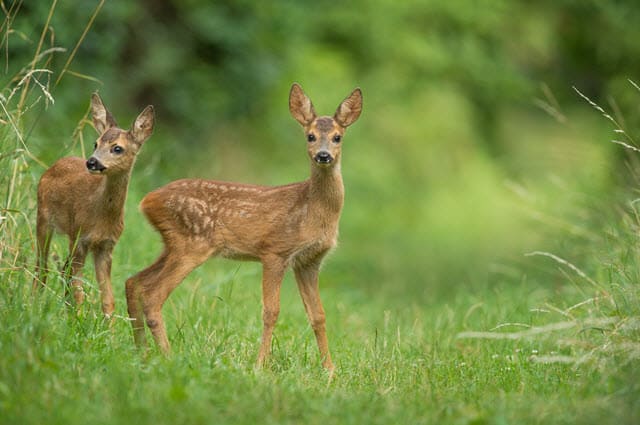
Below, I’ll answer some common questions about fawns.
What are the characteristics of a baby deer?
Newborn fawns or calves typically have white spots on their coats. This pattern mimics the streaks of light and dark shadows from trees, camouflaging the baby deer from predators.
Within their first year, fawns will lose the white spots and their coat will take a more solid color. Another characteristic of newborn baby deer is that they have no scent, which prevents them from being detected by other animals.
The average weight of fawns ranges between six and eight pounds, with male fawns weighing heavier than female ones.
How long do baby deer stay with their mother?
Most fawns can stand up and move about a few hours after their birth. However, they will stay hidden in areas where there is thick vegetation or tall bushes. This helps them avoid being seen by predators.
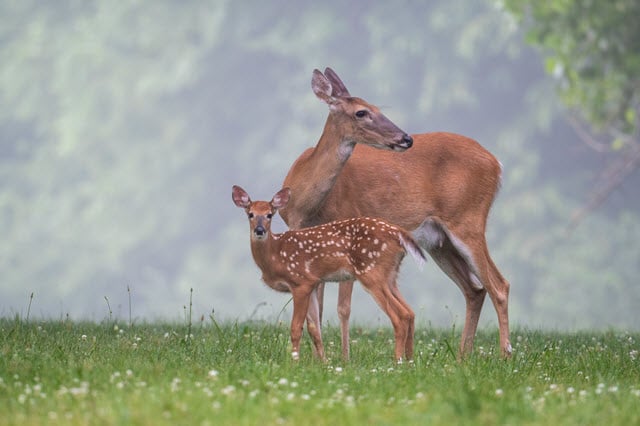
Mother deer will leave them alone several times a day to prevent their scent from leading predators to their fawn. Mothers will only return when it’s time to nurse fawns (four to five times a day).
By week two, fawns are expected to nibble on grass. In their second month, they can chew on seedlings and pick where they want to sleep. By the second or third month, mothers will wean their young from nursing to encourage them to forage and graze independently.
Even when fawns start grazing on their own, they still stay with their mothers. Female fawns typically stay for two more years, while males stay for a year.
How can you tell if a young deer is male or female?
Inspecting the reproductive organ of a young deer is the best way to tell whether it’s a male or female. However, doing this is dangerous, as mothers are protective of their young.
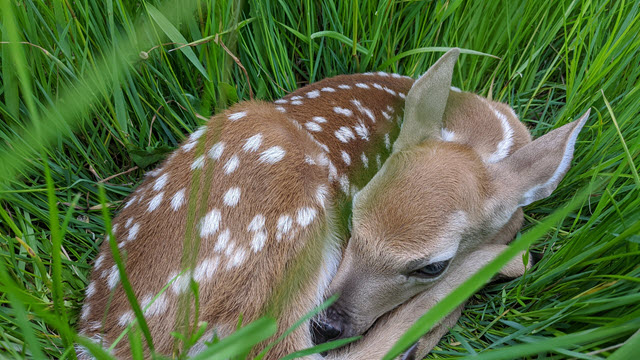
The easiest way to determine the gender of a young deer (from a safe distance) is by looking at the top of its head.
Young male deer won’t have antlers yet, but they have small bumps on the head called pedicles, which young female deer don’t have.
Pedicles are hard bone that is a part of the male deer’s skull where antlers will eventually grow. Most female deer don’t have antlers, but there are exceptions.
How can you tell the age of a young deer?
There are several ways where you can estimate a young deer’s age. The first is by looking at the way it walks. If the fawn wobbles while it walks and frequently takes a break to lie down, chances are it is less than four weeks old.
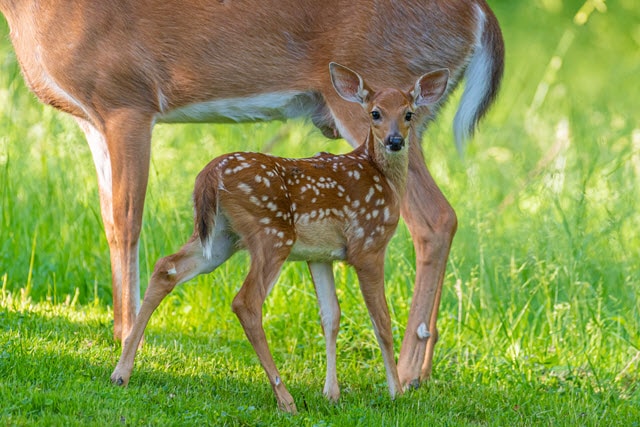
You can also take a look at the color of the fawn’s coat. If the fawn has white spots on the spine and all over the body, then they may be about three months old. This is a form of natural camouflage for fawns.
Another way to estimate the age of a young deer, especially for males, is to check if antlers have begun growing. Pedicles will start forming at around four months. They are more noticeable when the male fawn reaches its seventh month.
You can also check the fawn’s teeth to estimate their age. At birth, most fawns will have four teeth. In the second month, the cusps and premolars will start erupting. If the young deer has more than six teeth, then it could be a yearling. This means the deer is between one and two years old.

